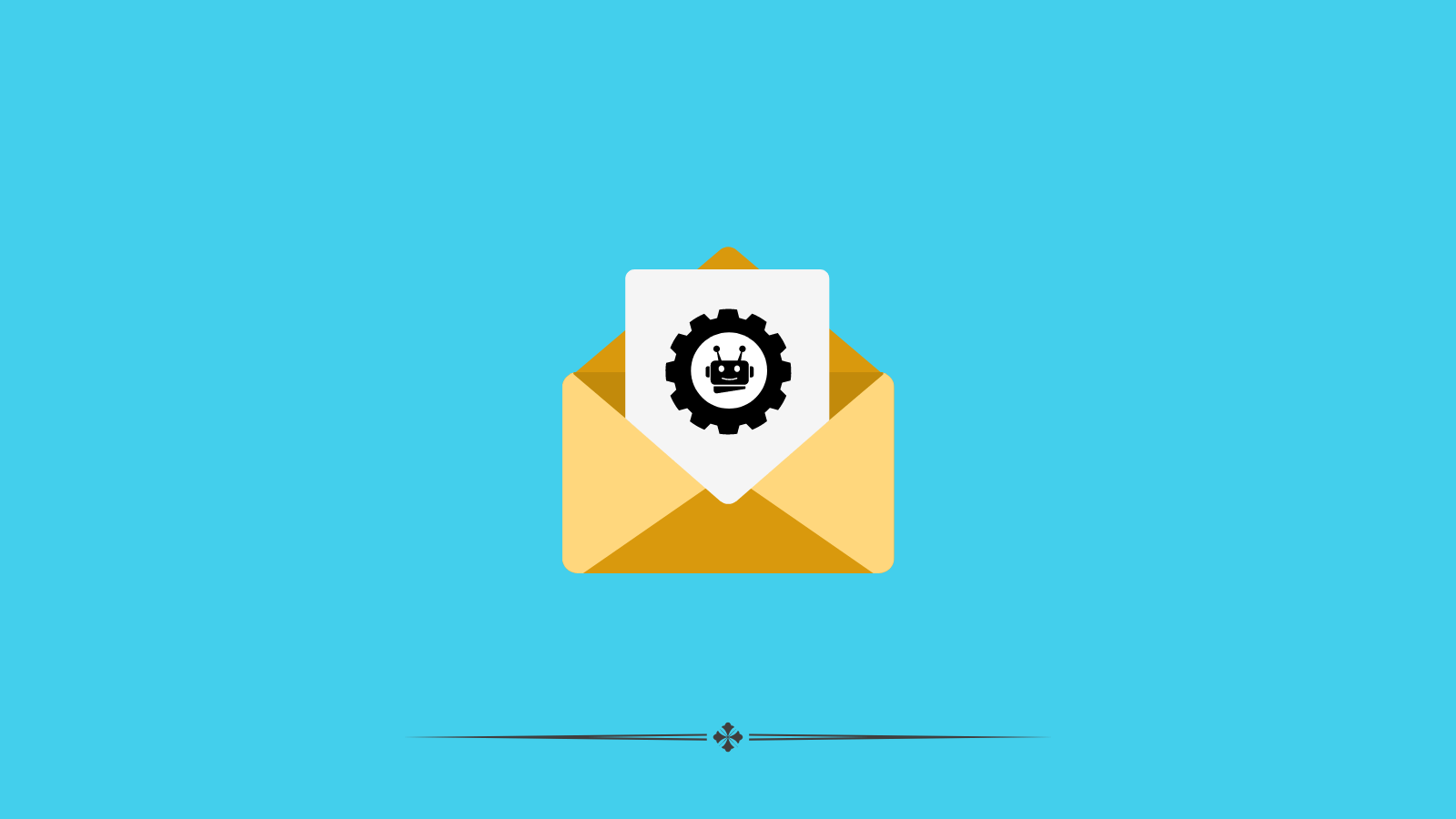AI-Powered Subject Lines: Boosting Open Rates for Cold Emails
Subject lines are pivotal in email marketing, acting as the first impression and often determining whether an email is opened or ignored. As inboxes become more crowded, crafting compelling subject lines is crucial for capturing attention. Artificial Intelligence (AI) has revolutionized digital marketing, offering tools to personalize and optimize content. In email marketing, AI-powered subject lines stand out as a key innovation, leveraging data to enhance engagement.
This article explores how AI-powered subject lines can significantly boost open rates for cold emails. We will examine the science behind open rates, the role of AI, and practical strategies for implementation, showcasing AI’s potential to transform email marketing campaigns.
Chapters
- The Science Behind Email Open Rates
- Factors Influencing Email Open Rates
- Statistical Data on Average Open Rates for Cold Emails
- Challenges Marketers Face with Cold Email Campaigns
- AI and Its Role in Email Marketing
- How AI Analyzes Data to Optimize Marketing Strategies
- Introduction to AI Tools Designed for Email Marketing
- Benefits of AI-Powered Subject Lines
- Strategies for Implementing AI-Powered Subject Lines
- Best Practices for Crafting AI-Generated Subject Lines
The Science Behind Email Open Rates

Email open rates are a critical metric in evaluating the success of any email marketing campaign. Understanding the factors that influence these rates can help marketers optimize their strategies and achieve better engagement. This section delves into the key elements that affect open rates, backed by statistical data and an exploration of the challenges faced in cold email campaigns.
Factors Influencing Email Open Rates
- Subject Line: The subject line is often the first thing recipients see and plays a pivotal role in determining whether an email is opened. An engaging, relevant, and personalized subject line can significantly boost open rates. Studies have shown that subject lines containing the recipient’s name or addressing a specific need tend to perform better.
- Sender Name and Email Address: The sender’s name and email address contribute to the email’s credibility. Emails from recognized and trusted sources are more likely to be opened. Conversely, unfamiliar or suspicious sender details can lead to lower open rates or even the email being marked as spam.
- Timing: The time and day when an email is sent can impact its open rate. For instance, emails sent on Tuesdays and Thursdays generally have higher open rates compared to other days. Additionally, the time of day, such as mid-morning or early afternoon, can also influence engagement levels.
- Preheader Text: The preheader text, or preview text, offers a glimpse of the email’s content and can entice recipients to open the email. Crafting a compelling preheader that complements the subject line can enhance open rates.
- Email Cadence and List Quality: The frequency of emails and the quality of the recipient list are crucial. Overwhelming recipients with too many emails can lead to fatigue and unsubscribes, while a well-maintained list with engaged subscribers can improve open rates.
When dealing with large amounts of data, marketing dashboards can help track and visualize these metrics effectively, ensuring that marketers have real-time insights into their campaign performance.
Statistical Data on Average Open Rates for Cold Emails
According to industry benchmarks, the average open rate for cold emails ranges between 15% to 25%, depending on the industry and target audience. However, these rates can vary significantly based on the quality of the email content, the relevance to the recipient, and the personalization efforts made. In highly competitive sectors, such as B2B technology, open rates can be as low as 10%, while more niche markets may see higher engagement.
Challenges Marketers Face with Cold Email Campaigns

- Deliverability Issues: One of the biggest challenges in cold email campaigns is ensuring that emails reach the recipient’s inbox. Factors such as spam filters, blacklisted IP addresses, and poor sender reputation can hinder deliverability, resulting in lower open rates.
- Lack of Personalization: Cold emails often lack the personalization that can make them relevant and engaging to the recipient. Generic or bulk emails can fail to resonate, leading to low open rates and limited responses.
- Recipient Distrust: Recipients may be wary of unsolicited emails, particularly if they are unfamiliar with the sender. Building trust and credibility through clear and transparent communication is essential to overcoming this challenge.
- Content Relevance: Even if an email is opened, the content must be relevant and valuable to the recipient. Emails that fail to address the recipient’s pain points or interests are likely to be ignored or deleted.
Integrating a CRM with email integration can help address these challenges by enabling marketers to maintain detailed recipient profiles and personalize their outreach more effectively.
AI and Its Role in Email Marketing
Artificial Intelligence (AI) has rapidly transformed the landscape of digital marketing, offering unprecedented opportunities to optimize and personalize marketing strategies. In email marketing, AI’s capabilities extend beyond simple automation, providing insights and efficiencies that were previously unimaginable. This section explores the role of AI in email marketing, detailing how it analyzes data to optimize strategies and introducing key AI tools designed specifically for this purpose.
AI technology in marketing encompasses a range of tools and techniques that leverage machine learning, natural language processing, and data analytics. These technologies enable marketers to understand and predict consumer behavior, personalize content, and automate repetitive tasks. AI’s ability to process vast amounts of data quickly and accurately makes it an invaluable asset in crafting targeted marketing campaigns, including email marketing.
How AI Analyzes Data to Optimize Marketing Strategies
AI’s strength lies in its ability to analyze large datasets and extract actionable insights. In email marketing, AI tools can analyze metrics such as open rates, click-through rates, and conversion rates to determine what content resonates with audiences. This analysis goes beyond surface-level metrics, delving into factors like recipient behavior patterns, preferences, and engagement levels.
For instance, AI can segment email lists based on recipients’ past interactions, demographics, and interests, allowing for highly targeted campaigns. It can also predict the best times to send emails, optimize subject lines for maximum engagement, and personalize email content to suit individual preferences. By continually learning from new data, AI helps marketers refine their strategies, ensuring that each campaign is more effective than the last.
Introduction to AI Tools Designed for Email Marketing

Several AI-powered tools have been developed specifically for email marketing, offering a range of functionalities that streamline the campaign creation process and enhance results. Some of the most popular AI tools include:
- Phrasee: This tool uses natural language generation to create optimized email subject lines and content. Phrasee’s algorithms analyze past performance data to generate text that is likely to engage the target audience.
- Boomtrain: Boomtrain focuses on personalized content recommendations, using AI to predict which content will be most relevant to individual subscribers. This tool integrates seamlessly with existing email marketing platforms, making it easy to implement.
- Seventh Sense: Seventh Sense specializes in optimizing email send times. By analyzing recipients’ engagement patterns, this tool determines the best time to send emails to maximize open rates and interactions.
- Conversica: Conversica offers an AI-powered sales assistant that engages with leads via email, answering questions, and nurturing them through the sales funnel. This tool helps automate follow-ups and ensures that potential customers receive timely and relevant information.
- Persado: Persado uses AI to generate emotional language for marketing messages. By understanding the emotional triggers that resonate with different audiences, Persado helps marketers craft compelling subject lines and content that drive action.
These tools demonstrate the versatility and power of AI in email marketing. By leveraging AI, marketers can not only improve the efficiency and effectiveness of their campaigns but also deliver more personalized and engaging experiences to their audiences.
Benefits of AI-Powered Subject Lines
In the competitive landscape of email marketing, crafting the perfect subject line can make or break a campaign. AI-powered subject lines offer a revolutionary approach, leveraging advanced technologies to enhance personalization, optimize performance, and streamline the creative process. This section explores the key benefits of using AI to generate subject lines, highlighting how this technology can elevate email marketing strategies to new heights.
Personalization at Scale
One of the most significant advantages of AI-powered subject lines is the ability to personalize messages at scale. Traditional methods of creating personalized subject lines are labor-intensive and often impractical for large email lists. AI, however, can analyze vast amounts of data about individual recipients, including their past interactions, preferences, and demographics. By processing this information, AI generates subject lines tailored to each recipient’s unique profile, making the email feel more relevant and engaging.
This level of personalization is crucial in capturing the attention of recipients, as emails that resonate with personal interests or needs are more likely to be opened. For instance, an AI-generated subject line might reference a recent purchase, a specific interest, or even the recipient’s location, creating a sense of connection and urgency.
Data-Driven Insights
AI doesn’t just help in crafting subject lines; it also provides invaluable data-driven insights. By analyzing historical data, such as open rates, click-through rates, and conversion metrics, AI can identify patterns and trends that indicate what types of subject lines are most effective. This analysis allows marketers to understand what resonates with their audience and refine their strategies accordingly.
Furthermore, AI can predict the potential success of different subject lines by simulating various scenarios. This predictive capability helps marketers choose the most promising subject lines before launching a campaign, increasing the likelihood of a successful outcome. With data-driven insights, marketers can make more informed decisions, reducing guesswork and enhancing the overall effectiveness of their email campaigns.
Speed and Efficiency
The process of brainstorming, drafting, and testing subject lines can be time-consuming, especially for large-scale campaigns. AI-powered tools significantly speed up this process by automating the creation of subject lines. These tools can generate multiple subject line variations in seconds, each tailored to different segments of the audience.
This cold email automation not only saves time but also allows marketers to focus on other critical aspects of their campaigns, such as content development and strategy optimization. By streamlining the subject line creation process, AI enables marketing teams to work more efficiently and effectively, meeting tight deadlines and achieving better results.
A/B Testing and Continuous Improvement
A/B testing is a cornerstone of email marketing, allowing marketers to experiment with different subject lines to see which ones perform best. AI enhances this process by generating multiple variations and continuously learning from the results. With each test, AI algorithms analyze the performance data, refining the subject lines and making adjustments for future campaigns.
This continuous improvement loop ensures that the subject lines evolve and adapt to changing audience preferences and market conditions. As a result, marketers can consistently deliver high-performing subject lines that resonate with their audience, driving higher open rates and engagement.
Strategies for Implementing AI-Powered Subject Lines
Implementing AI-powered subject lines in your email marketing strategy can significantly enhance engagement and conversion rates. However, to fully harness the power of AI, it’s crucial to adopt the right tools, integrate them seamlessly with your existing platforms, and follow best practices for crafting compelling subject lines. In this section, we will explore these strategies and provide real-world examples of successful AI-powered email campaigns.
Choosing the Right AI Tools for Your Email Marketing Needs

The first step in implementing AI-powered subject lines is selecting the right tools that align with your specific needs and goals. There are various AI tools available, each offering unique features such as natural language processing, predictive analytics, and personalization capabilities. When choosing an AI tool, consider factors like ease of integration, scalability, user interface, and customer support.
For instance, if your primary goal is to optimize subject line creativity and engagement, a tool like Phrasee might be ideal, as it specializes in generating linguistically and emotionally impactful content. On the other hand, if personalization is your focus, Boomtrain offers advanced segmentation and content recommendation features. It’s essential to evaluate the capabilities of each tool and how they align with your marketing strategy.
Integrating AI with Existing Email Marketing Platforms
Once you’ve selected an AI tool, the next step is to integrate it with your existing email marketing platform. This integration should be seamless, allowing for easy data transfer and communication between systems. Many AI tools offer APIs or plugins that can be easily connected to popular email marketing platforms like Mailchimp, HubSpot, or Marketo.
During integration, ensure that the AI tool can access historical B2B data and analytics from your existing platform. This data is crucial for the AI algorithms to learn and optimize subject line performance. Additionally, consider how the AI tool will interact with other elements of your email marketing, such as content creation, segmentation, and automation workflows.
Adopting AI tools can also contribute to improved customer retention by providing insights that help tailor content to customer preferences, thus fostering long-term engagement.
Best Practices for Crafting AI-Generated Subject Lines
While AI tools can generate subject lines automatically, it’s essential to follow best practices to maximize their effectiveness. Here are some key guidelines:
- Maintain Brand Voice: Ensure that the AI-generated subject lines align with your brand’s tone and voice. While AI can generate creative content, it’s important to review and adjust the output to maintain consistency with your brand identity.
- Personalization: Leverage AI’s ability to personalize subject lines based on recipient data. Include elements like the recipient’s name, past purchase history, or location to make the subject line more relevant and engaging.
- Keep it Short and Sweet: Subject lines should be concise and to the point. Aim for a length of 40-60 characters to ensure that the entire subject line is visible on most devices, including mobile.
- A/B Testing: Continuously test different subject lines to see what resonates with your audience. Use the AI tool’s data analytics features to analyze the results and refine your approach over time.
- Avoid Spam Triggers: Be mindful of words and phrases that could trigger spam filters. AI tools often have built-in features to help avoid such pitfalls, but it’s essential to review subject lines for compliance with best practices.
Conclusion
AI-powered subject lines have revolutionized email marketing by enhancing personalization, optimizing performance, and streamlining processes. By leveraging AI technology, marketers can craft subject lines that resonate with recipients, significantly boosting open rates and overall campaign success.
As AI continues to evolve, its impact on digital marketing will only grow, offering even more sophisticated tools for engaging with audiences. Embracing AI in email marketing strategies is no longer optional but essential for staying competitive and achieving long-term success.
Create more and better content
Check out the following resources and Grow!